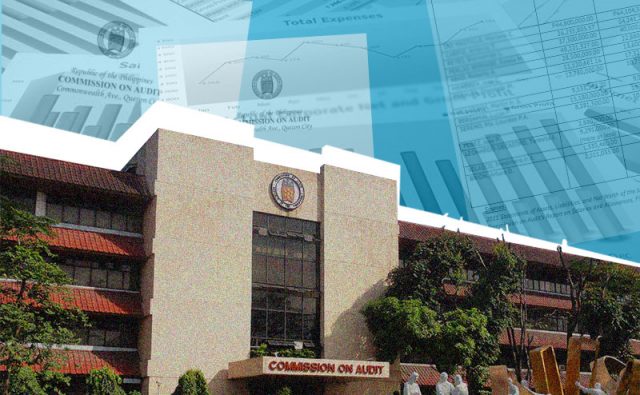
The publication of a Commission on Audit annual report questioning a P60-million deal between the state-run People’s Television Network Inc. or PTV-4 and Bitag Media Unlimited Inc. as its blocktimer to air Department of Tourism ads has revived discussion on the duties and functions of the government’s auditing body.
The COA in its annual report on PTV-4 noted the absence of a memorandum of agreement between PTV-4 and Bitag Media, which is owned by Ben Tulfo, brother of Tourism Secretary Wanda Tulfo-Teo. The discovery was made by interviewing accounting personnel.
The auditing body claimed that the lack of required supporting documents was a violation of Presidential Decree 1445 or the Government Auditing Code and COA Circular 2012-001.
BITAG owner Ben Tulfo in a deleted Facebook live post blamed newly-appointed DOT Undersecretary Pompee La Viña for “leaking” the content of the COA’s report, even though such reports are usually posted on the COA homepage.
At ano pakialam ni Pompee La Viña sa COA report, ABER? https://t.co/j8H8ou3lYX
— _kim (@_Kim971A) April 30, 2018
The younger Tulfo has claimed that the deal with PTV-4 was legal.
NASABI KO NA ANG MGA DAPAT NINYONG MARINIG.BITAG Live followers, Tulfo Brothers followers and all the NEWS MEDIA… No…
Posted by BITAG Live on Sunday, April 29, 2018
However, the COA homepage has been inaccessible since Monday noon.
Both the Tourism chief and PTV-4 have denied liability. Tulfo-Teo has claimed that she had no hand in deal between the television station and her brother’s company. PTV-4 meanwhile claims compliance with the requirements set by Commission on Audit Circular 2012-001.
Some critics, however, are skeptical of the legitimacy of the deal, citing its incongruity with media practice.
SINUNGALING. Block timer ang Tulfo prod sa PTV4. Ads ARE NOT GIVEN BY THE NETWORK TO BLOCK TIMERS. It's a deal between the blocktimer and the one placing ads, which in this case is the Dept Of Tourism. #WandaTeo #WandaTulfoTeo #SacredCows #DutertesMen https://t.co/UrHKO8Gql3
— katrinastuartsantiago (@radikalchick) April 30, 2018
The power of COA
The power and scope of the present incarnation of the COA can be found in Section 2 of Article IX of the 1987 Constitution.
Under the provision, the COA has “the power, authority, and duty to examine, audit, and settle all accounts pertaining to the revenue and receipts of, and expenditures or uses of funds and property, owned or held in trust by, or pertaining to, the Government, or any of its subdivisions, agencies, or instrumentalities, including government-owned or controlled corporations with original charters” on a post-audit basis.
Also covered by the COA’s jurisdiction are other constitutional commissions, autonomous state colleges and universities, subsidiaries of government-owned corporations, and legally-subsidized non-governmental entities.
Section 4 of the 1987 Constitution provides that annual reports on government bodies must be submitted to the president and the Congress, at a period fixed by law.
Section 4 of the 1987 Constitution provides that annual reports on government bodies must be submitted to the president and the Congress, at a period fixed by law.
Prior to the ratification of the 1987 Constitution, Ferdinand Marcos during the Martial Law period released Presidential Decree 1445, which codified and organized the country’s previous government auditing laws into a single law: The Government Auditing Code of the Philippines.
It was also PD 1445 which decreed the auditing body to submit annual reports on the financial condition and operational reports of government bodies.
In 2009, the Revised Rules of Procedure of the Commission on Audit was passed. The new law provided not just for the procedures for cases under the COA and an enumeration of the entities within its jurisdiction, but also defined its powers and the cases under its jurisdiction.
“Disallowance of expenditures or uses of government funds and properties found to be illegal, irregular, unnecessary, excessive, extravagant or unconscionable” is listed as part of its jurisdiction.
The anatomy of a COA annual report
Philstar.com was able to download a copy of the report before the website went down.
The report contains an executive summary of the government body audited, which includes an overview of its project their status.
Balance sheets on the body’s financial position, financial performance, cash flow, change in equity, comparison of budget and actual amount are also included for transparency.
It is in the “findings and recommendations” portion of the report where the COA discusses the audit of the body’s finances in relation to its projects. It is here where the report discusses compliance—or lack thereof—with provisions of law in undertaking projects or signing contracts. An analysis of the body’s liabilities, as well as its documentary deficiencies in such undertakings are also discussed.
The findings and recommendations of the report on PTV-4 contains a request for compliance with various memorandum circulars and PD 1445.









